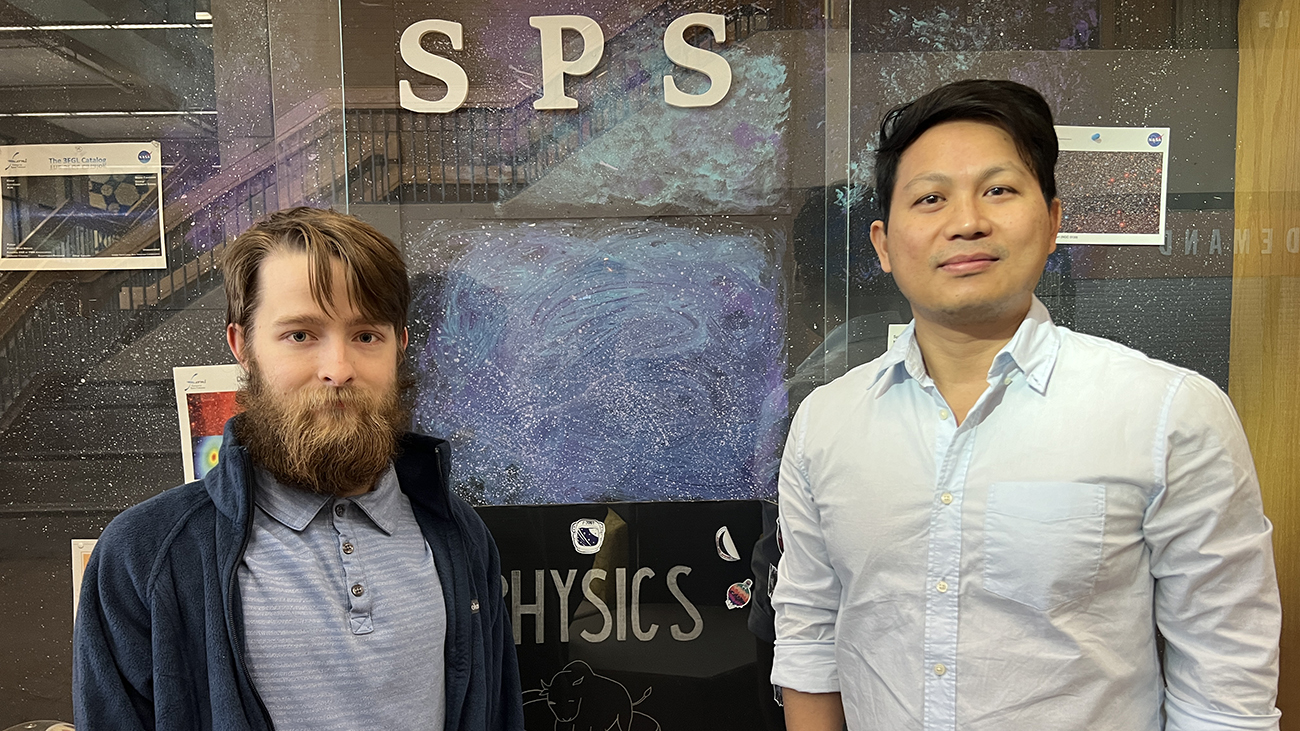- Featured
- Science
- Research
WT Students, Professor Publish Research into New Possibilities in Faster Electronics
Copy by Chip Chandler, 806-651-2124, cchandler@wtamu.edu
CANYON, Texas — Student researchers from West Texas A&M University recently published a study into a new metal compound that could aid in the search for more efficient electronics.
Cole Phillips, a senior physics major from Amarillo, and Thinh (John) Nguyen, a WT graduate now pursuing a Ph.D. in chemistry at Texas A&M University, were among the research team examining a vanadium-based compound that could have a profound impact on the development of quantum computers.

Shrestha and several of his students have conducted experiments at the National High Magnetic Field Laboratory in Tallahassee, Florida, on Kagome lattices in newly discovered metal compounds, similar to lattice patterns found in natural minerals. The unusual geometry of these Kagome materials, whose atomic structures resemble woven Japanese baskets, have topological properties that can increase the speed of electrical transmissions.
“The most intriguing thing about Kagome metal, especially ScV6Sn6, is that this is a new material, which means there are still many potentially undiscovered properties that need to be unveiled to complete the whole picture,” Nguyen said.
The compound of scandium, vanadium and tin studied by Phillips, Nguyen and the others showed superconducting properties at low temperatures in the Florida lab.
“Research into this type of metal will give us insight that can possibly help us find a room-temperature or topological superconductor, the holy grail of this field,” Phillips said.
Ultimately, the unique properties of these Kagome materials could be used in the creation of quantum computers, which are thousands of times faster than current models.
“It’s super exciting to be published, and it couldn’t come at a better time,” Phillips said. “I’m applying for graduate schools this month.”
“I'm proud of both students for their dedication to collecting, analyzing data, and contributing to manuscript writing,” Shrestha said. “This research training will be incredibly beneficial for their future as researchers.”
Such research activities are one way in which WT is strengthening its position as a regional research university, a key priority of the University’s long-range plan, WT 125: From the Panhandle to the World.
That plan is fueled by the historic One West comprehensive fundraising campaign, which reached its initial $125 million goal 18 months after publicly launching in September 2021. The campaign’s new goal is to reach $175 million by 2025; currently, it has raised more than $150 million.
About West Texas A&M University
WT is located in Canyon, Texas, on a 342-acre residential campus. Established in 1910, the University has been part of The Texas A&M University System since 1990. WT, a Hispanic Serving Institution since 2016, boasts an enrollment of about 10,000 and offers 59 undergraduate degree programs and more than 40 graduate degrees, including two doctoral degrees. The University is also home to the Panhandle-Plains Historical Museum, the largest history museum in the state and the home of one of the Southwest’s finest art collections. The Buffaloes are a member of the NCAA Division II Lone Star Conference and offers 14 men’s and women’s athletics programs.
Main Photo: Cole Phillips, a senior physics major, and Dr. Keshav Shrestha, assistant professor of physics, collaborated with Thinh (John) Nguyen (inset) on newly published research into a new metal compound.
—WT—

